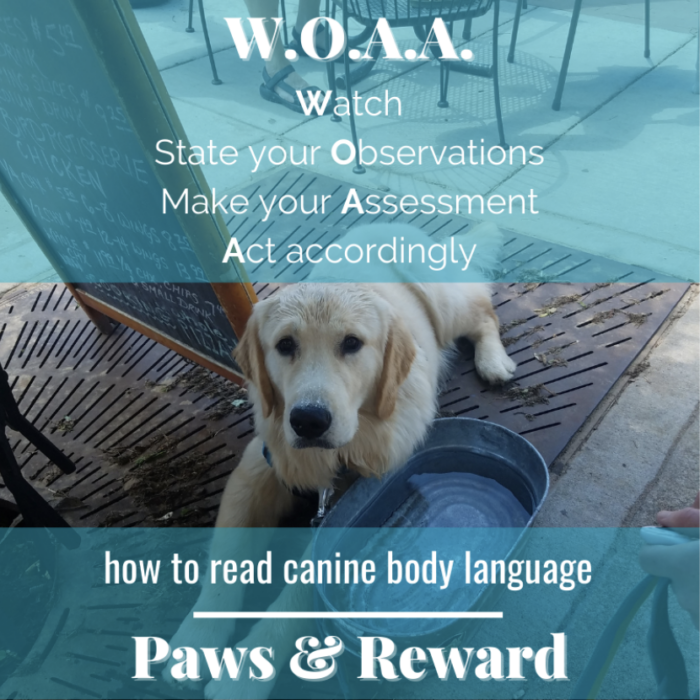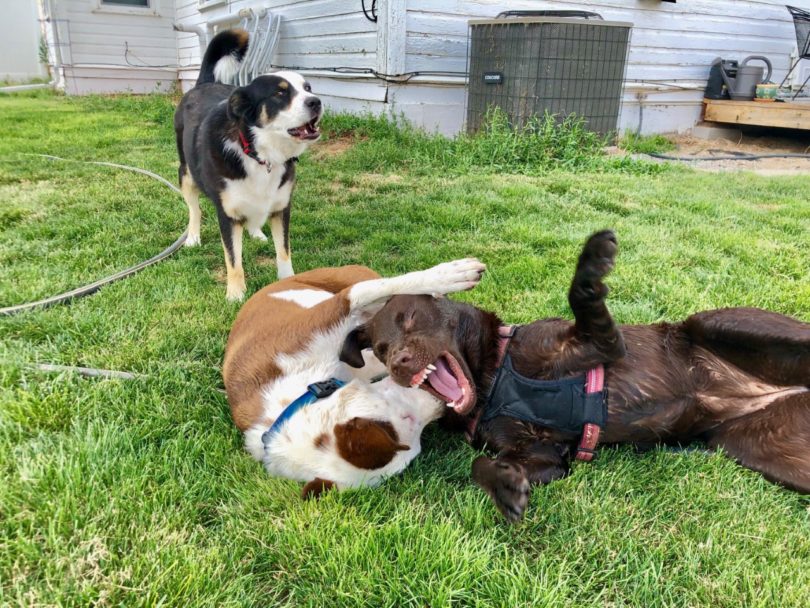Join me on this episode of the Paws & Reward Podcast as I interview Mara Velez of the Shelter Playgroup Alliance to discuss what safe and healthy dog play looks like.
Mara shares how to facilitate safe interactions, what behaviors to be aware of, how to identify healthy dog play vs. aggression, and when to intervene to keep play safe and positive.
What does healthy dog play look like?
Healthy dog play consists of:
- Loose, exaggerated movements. This may include a curvature of the spine, loose muscles and body postures.
- Space between the dogs. They are close but not too close. If they get too close and their bodies become more rigid, this might be an indication of conflict.
- Taking breaks. Breaks can be very short (several seconds) and they usually happen every 30 – 45 seconds.
- Variety. Dogs engage in a variety of activities from chase to jaw wrestling when play remains safe and healthy.
Check out what healthy dog play looks like!
Do all dogs want to play?
The short answer is no. There are many factors that contribute to a dog’s willingness to engage in play with other dogs – even healthy dog play. These factors may include:
- Their early socialization. Were they exposed to a variety of breeds, ages and sizes in a safe, positive way when they were a puppy under 4 months old?
- Life experiences. What sort of experiences has the dog had with other dogs throughout his/her life? Were they positive or negative?
- Right match. What sort of play style does your dog enjoy? Chasing or physical play? Are you facilitating the right matches for your dog’s play style?
When introducing dogs and building relationships, it’s important to go slow and make sure both dogs are consenting to the interaction. The Shelter Playgroup Alliance YouTube channel has great videos on what consent looks like.
If your dog does not want to play, there are other ways to provide enrichment for your dog. Check them out here!
How often should a pet parent interrupt play to prevent it from escalating?
It’s important for pet parents to be observing their dogs play at all times as things can escalate faster than we anticipate. Usually, pet parents interrupt play as a reactive response instead of a proactive response. Being proactive is one of the best ways to encourage healthy dog play.
A few signs that play is starting to escalate may include:
- Dogs might be avoiding one another.
- Their respiration might increase.
- Their pupils might be dilated.
- They are not taking frequent breaks and their bodies might become a bit more stiff.
The goal would be to interrupt play before things escalate. The best way to do this would include using a high-pitch happy voice and creating space between the two dogs. Once the dogs are away from one another, you can reinforce the facilitated break with food and then release them back to play.
For more detailed information on introductions and managing safe and healthy dog play, please read the Shelter Playgroup Alliance guidelines.

How can I get better at reading inter-canine behavior and encouraging healthy dog play?
Review the resources below to learn more about how to encourage healthy dog play and how to know the difference between normal dog play vs aggression.
- Shelter Playgroup Alliance YouTube Channel
- Canine Behavior: A Photo Illustrated Handbook by Barbara Handelman
- Lily Chin Canine Body Language Book
- Safe Leash Handling and Dog Introduction
Want to learn more about dog behavior and dog behavior modification? Explore all the ways to work with Paws and Reward, including private lessons and our online courses.

